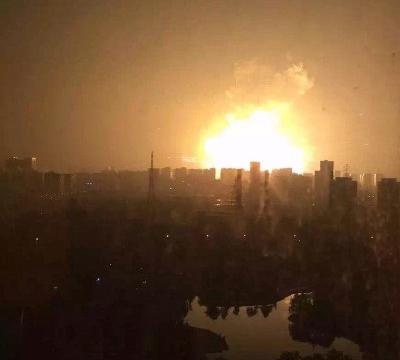Industrial and workplace accidents have occurred throughout history and throughout the world, causing significant loss of life and long-lasting impact on the communities affected.
Here are 10 of the worst industrial or workplace accidents in world history:
- Senghenydd Colliery Disaster (1913): This coal mining accident in Wales resulted in the deaths of 439 miners. The cause of the disaster was a methane gas explosion, which led to a devastating underground fire. It remains the worst mining disaster in the UK’s history.
- Benxihu Colliery Disaster (1942): This coal mining accident in China resulted in the deaths of 1,549 miners. The disaster was caused by a coal dust explosion and an underground fire, which spread rapidly throughout the mine.
- Bhopal Gas Tragedy (1984): A gas leak from a pesticide plant in Bhopal, India, resulted in the deaths of at least 3,787 people and injured thousands more. The disaster was caused by a failure in the plant’s safety systems, and it is considered one of the worst industrial accidents in history.
- Piper Alpha Oil Platform Disaster (1988): An explosion on an oil platform in the North Sea resulted in the deaths of 167 workers. The disaster was caused by a gas leak and a failure of safety systems, which led to a devastating fire on the platform.
- The Mont Blanc Tunnel Fire (1999): A fire in the Mont Blanc Tunnel between France and Italy resulted in the deaths of 41 people and injured many more. The disaster was caused by a truck carrying hazardous materials that caught fire in the tunnel, which led to a devastating fire.
- Upper Big Branch Mine Disaster (2010): An explosion in a coal mine in West Virginia resulted in the deaths of 29 miners. The disaster was caused by a buildup of methane gas and a failure to adequately ventilate the mine. It led to significant changes in regulations for the coal mining industry and resulted in criminal charges against the mine’s owner.
- Rana Plaza Collapse (2013): A building collapse in Bangladesh resulted in the deaths of 1,134 garment workers and injured many more. The disaster was caused by the use of substandard building materials and a failure to properly maintain the structure.
- Tianjin Explosions (2015): A series of explosions at a warehouse in China storing hazardous chemicals resulted in the deaths of 173 people and injured many more. The disaster was caused by a failure to properly store and handle the chemicals, and it led to widespread damage and destruction in the surrounding area.
- Grenfell Tower Fire (2017): A fire in a high-rise apartment building in London, UK, resulted in the deaths of 72 people and injured dozens more. The disaster was caused by the use of flammable cladding on the building’s exterior, and it has led to significant changes in regulations for building safety and fire codes.
- Xiangshui Chemical Plant Explosion of 2019: The 2019 Xiangshui chemical plant explosion was a major disaster that occurred on March 21, 2019 in Chenjiagang Chemical Industry Park, Jiangsu, China. The facility, operated by Tianjiayi Chemical, was used to produce fertilizer or pesticides and had a history of environmental violations and disregard for safety regulations. The explosion resulted in 78 deaths and 617 injuries and was caused by the spontaneous ignition of illegally stored nitrified waste. The State Council of China officially recognized the severity of the accident and found both the company and various departments in Jiangsu Province responsible for the disaster. The incident highlights the need for stronger regulations and enforcement of chemical safety measures.
These industrial and workplace accidents have resulted in not only the loss of lives but also significant physical, emotional and economic damage to the affected communities and individuals. They serve as a reminder of the importance of proper safety regulations, procedures and training in the workplace, and the need for continued efforts to improve workplace safety globally.
References:
- Image Attribution:
- By Eristic-霖璟, CC BY-SA 4.0, https://commons.wikimedia.org/w/index.php?curid=42430036


